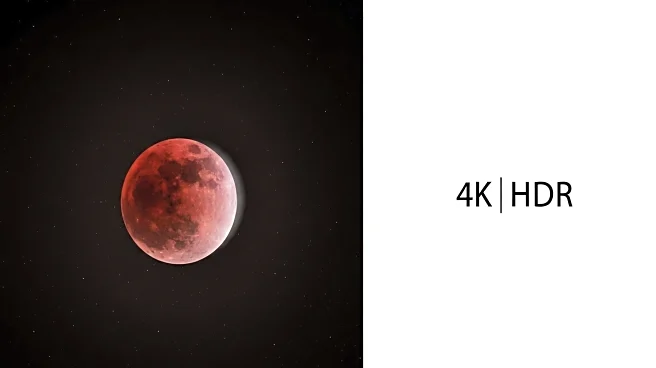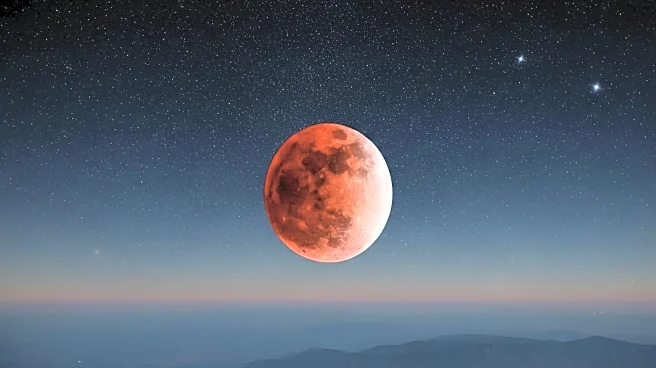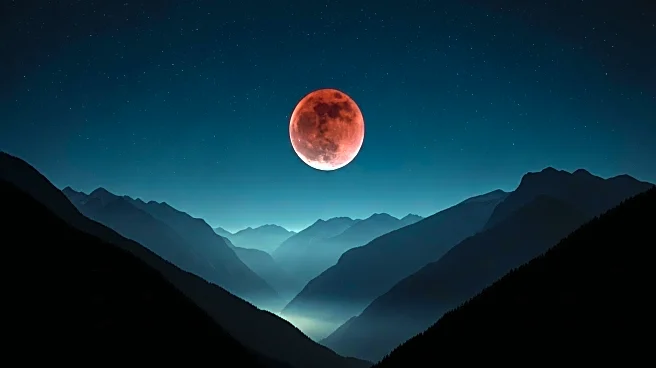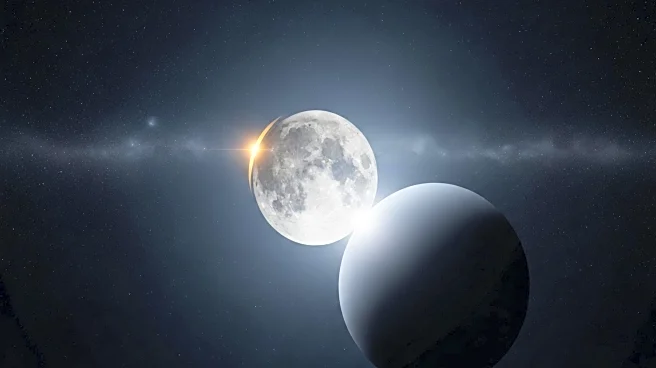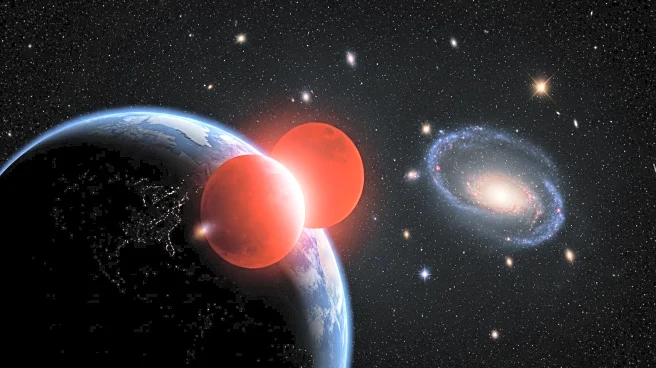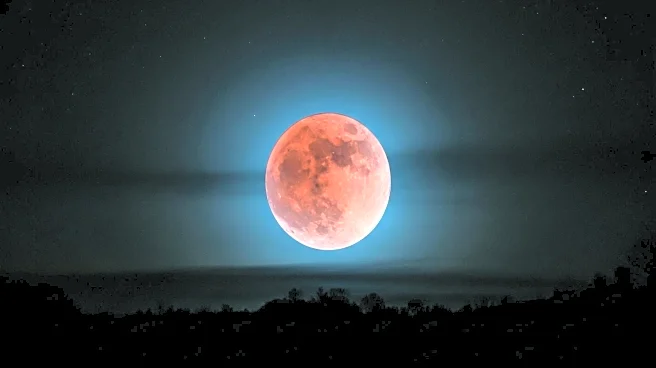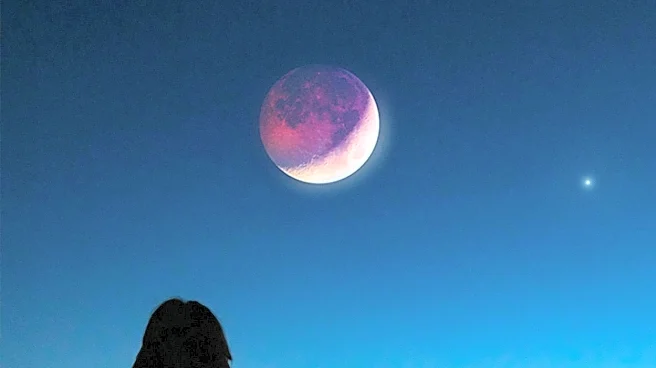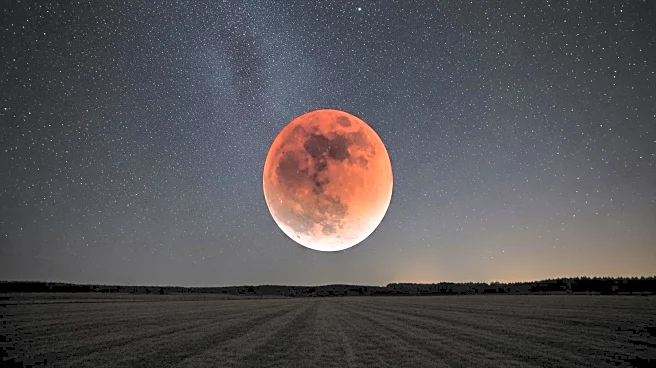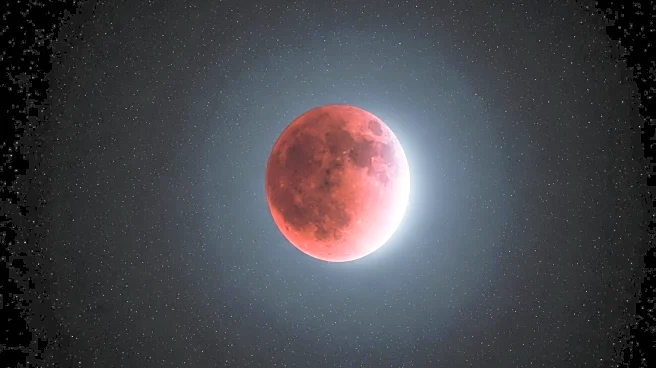What's Happening?
A total lunar eclipse, known as a 'Blood Moon', is set to occur on Sunday night, offering stargazers across Asia, Europe, and Africa a chance to witness the celestial event. During a lunar eclipse, the alignment of the Sun, Earth, and Moon causes the Earth's shadow to cast a deep red hue on the Moon. This phenomenon occurs because the sunlight reaching the Moon is reflected and scattered through the Earth's atmosphere, with blue wavelengths being dispersed more easily than red ones. Ryan Milligan, an astrophysicist at Queen's University Belfast, explains that this scattering effect is responsible for the Moon's eerie red color during the eclipse. The total lunar eclipse will last from 1730 GMT to 1852 GMT, with the best views available in Asia, including India and China, and parts of Africa and Australia. Europe and Africa will see a partial eclipse as the Moon rises, while the Americas will miss out on this event.
Why It's Important?
The 'Blood Moon' total lunar eclipse is a significant astronomical event that captivates observers worldwide due to its striking visual impact and rarity. Such events offer valuable opportunities for scientific study and public engagement with astronomy. For astrophysicists and eclipse chasers like Ryan Milligan, these occurrences provide insights into atmospheric conditions and celestial mechanics. The widespread visibility of the eclipse across multiple continents highlights the interconnectedness of global astronomical phenomena. Additionally, the event serves as a precursor to a rare total solar eclipse expected in Europe in 2026, which will further engage the scientific community and the public in understanding solar and lunar dynamics.
What's Next?
Following the 'Blood Moon' lunar eclipse, anticipation builds for the upcoming total solar eclipse in Europe on August 12, 2026. This event will be the first total solar eclipse visible in mainland Europe since 2006, with Spain and Iceland being prime locations for viewing the totality. The eclipse will be visible in a narrow band between Madrid and Barcelona, although neither city will experience the full phenomenon. This solar eclipse is expected to draw significant interest from both scientists and the general public, offering another opportunity for astronomical observation and study. Preparations for viewing and studying the eclipse will likely intensify as the date approaches.
Beyond the Headlines
The cultural and historical significance of lunar eclipses, often referred to as 'Blood Moons', extends beyond their scientific interest. Throughout history, such events have been interpreted as omens or symbols in various cultures, influencing folklore and mythology. The visual spectacle of a 'Blood Moon' continues to inspire artistic and literary expressions, reflecting humanity's enduring fascination with celestial phenomena. As technology advances, the ability to share and document these events globally enhances collective understanding and appreciation of the universe.
